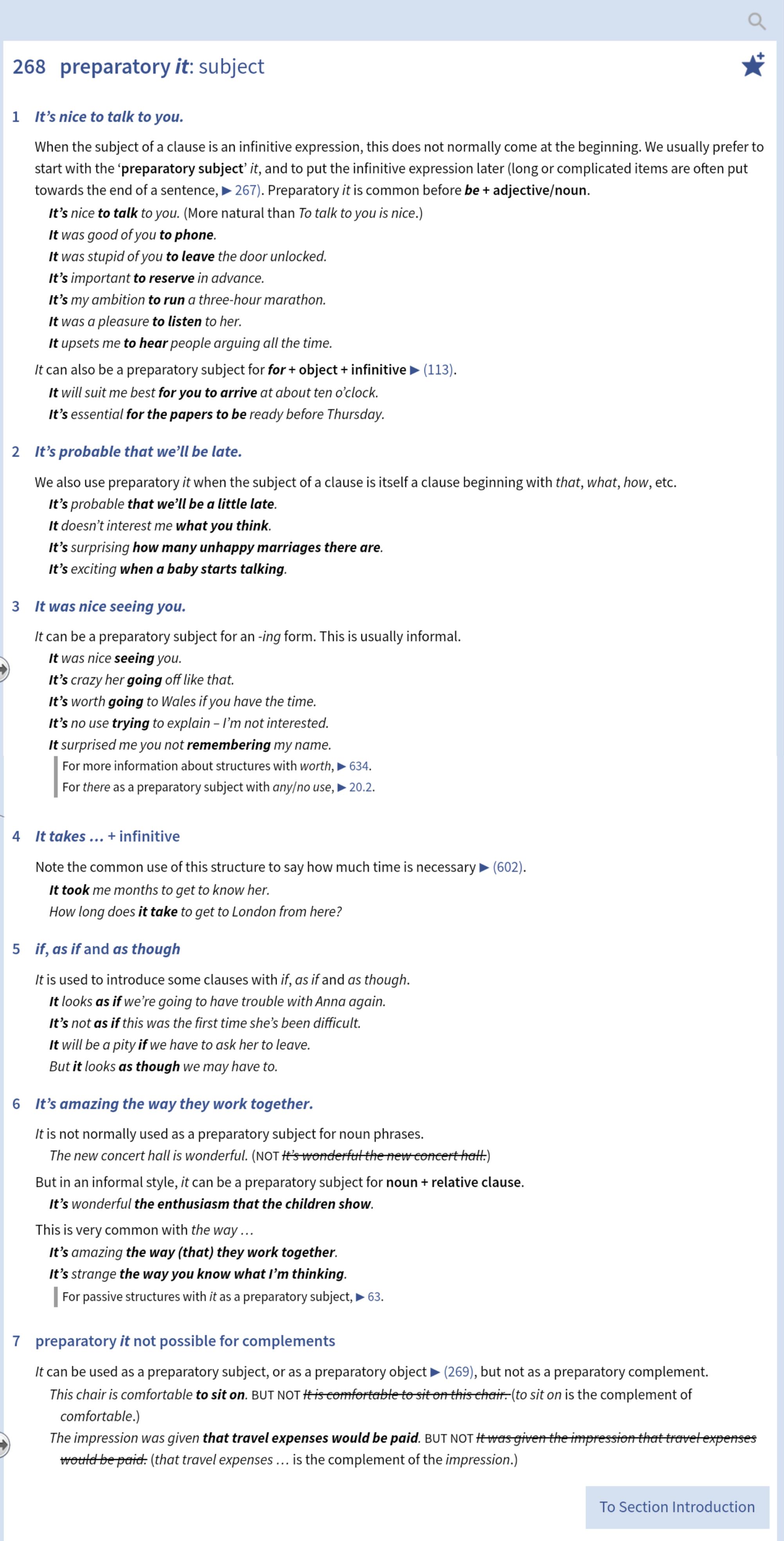According to Practical English Usage, 4th ed., Michael Swan (2017), section 'preparatory it', preparatory it is not used with complements. He gives these two examples (section 7 in the screenshot):
EXAMPLE 1
CORRECT: This chair is comfortable to sit on.
WRONG: It is comfortable to sit on this chair.
NOTE: 'to sit on' is the complement of 'comfortable'.
EXAMPLE 2
CORRECT: The impression was given that travel expenses would be paid.
WRONG: It was given the impression that travel expenses would be paid.
NOTE: 'that travel expenses' is the complement of the 'impression'.
I believe I understand where he aims at, but I tend to believe that I, from time to time/or even often, hear such constructs (but I'm not 100% sure that it really is the same complement construct), that Swan says is not correct. Here are some examples:
Example 1
It is difficult to drive this car.
(This car is difficult to drive.)
Example 2
It is easy to ride on that mare.
(That mare is easy to ride on.)
Example 3
It is fascinating to watch this film.
(This film is fascinating to watch.)
I'm not too sure whether my examples are well chosen, but to me they seem to represent the exact same logic/problem.
Do people not use such constructs?
Are they considered ungrammatical by linguists but accepted in everyday speech/writing?
NOTE: Yes, I'm aware that there is one other question here in the forum. However, it does not address possible examples that we might hear every now and then.

